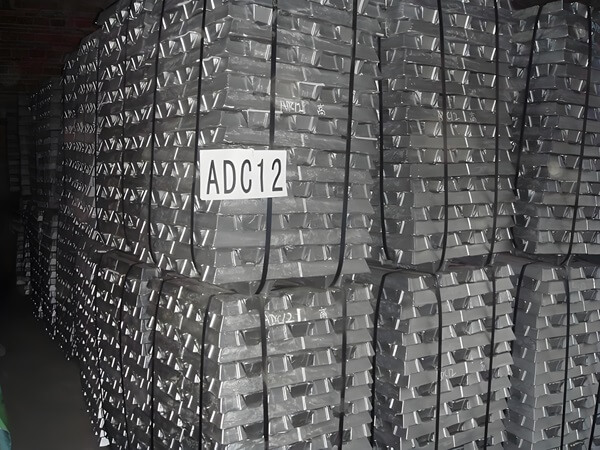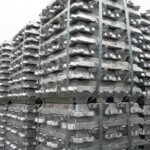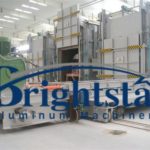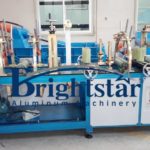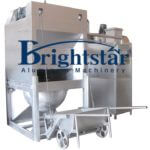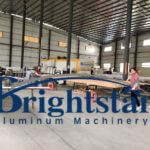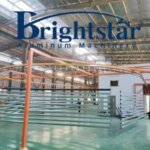Everything You Need to Know About ADC12: Composition, Properties, Applications
Everything you need to know about adc12: composition, properties, applications
Aluminum alloys occupy an important position in modern industrial manufacturing due to their low density, high strength and good corrosion resistance.
ADC12, as a widely used cast aluminum alloy, plays a key role in many fields such as automobiles, electronics, and machinery.
This article will deeply analyze the composition, characteristics and applications of ADC12 cast aluminum alloy, aiming to provide a comprehensive and detailed reference for material selection, process optimization and product design in related fields.
1. Basic information of ADC12 aluminum alloy
ADC12 is a Japanese alloy, also known as No. 12 aluminum material, which belongs to the Al-Si-Cu alloy system and is a typical die-cast aluminum alloy, Its implementation standard is JISH5302-2000 “Aluminum Alloy Die Castings”
In China, it is equivalent to the domestic alloy code YL113, the alloy grade is YZAlSi11Cu3, and the implementation standard is GB/T15115-2009;
In the United States, the alloy grade is 384, and the implementation standard is ASTMB85-03 “Standard Specification for Aluminum Alloy Die Castings”.
Due to its good comprehensive performance and relatively mature production process, ADC12 is widely used in the manufacture of various die-casting products worldwide.
2. Chemical composition analysis
2.1 Main elements and their functions
*Aluminum (Al): As a matrix element, the content of aluminum accounts for the balance, about 85%.
Aluminum gives the alloy basic physical and chemical properties, such as low density, good thermal conductivity and electrical conductivity, and provides the alloy with basic properties such as light weight and heat dissipation.
*Silicon (Si): The content is between 9.6 and 12.0%.
Silicon is a key element that affects the casting performance of ADC12.
It can significantly reduce the melting point of the alloy, improve the fluidity of the alloy liquid, and enable the alloy to better fill the mold cavity during the die-casting process.
It is especially suitable for manufacturing die-casting parts with complex shapes and thin walls.
In addition, silicon can also form aluminum silicide phase with aluminum, which plays a role in strengthening the alloy and improving the hardness and wear resistance of the alloy.
*Copper (Cu): The content is 1.5 – 3.5%.
Copper forms a strengthening phase with aluminum, which significantly improves the strength and hardness of the alloy through solid solution strengthening and aging strengthening mechanisms.
Especially in high temperature environments, the copper-containing phase can effectively hinder dislocation movement and maintain the mechanical properties of the alloy.
At the same time, copper can also improve the cutting performance of the alloy.
*Magnesium (Mg): Content ≤ 0.3%.
Magnesium forms a strengthening phase with aluminum, further improving the strength and toughness of the alloy.
An appropriate amount of magnesium can form a dense oxide film on the surface of the alloy, enhancing the corrosion resistance of the alloy.
*Zinc (Zn): Content ≤ 1.0%.
Zinc plays a major role in assisting alloying in the alloy, improving the fluidity and casting properties of the alloy and, to a certain extent, increasing the strength of the alloy.
2.2 Minor elements and their effect
*Iron (Fe): content ≤ 1.3%.
A small amount of iron can refine the grains and improve the strength of the alloy, but when the iron content is too high, coarse needle-shaped or flaky iron-rich phases will be formed, such as α (Fe₃SiAl₁₂), β (Fe₂Si₂Al₉), etc.
These brittle phases seriously destroy the continuity of the matrix, reduce the toughness, plasticity and corrosion resistance of the alloy, and increase the thermal cracking tendency of the alloy.
*Manganese (Mn): Content ≤ 0.5%.
Manganese can form compounds with iron, reduce the harmful effects of iron, refine the grain structure, improve the strength and toughness of the alloy, and help improve the corrosion resistance of the alloy.
*Nickel (Ni): content ≤ 0.5%.
Nickel can improve the high temperature strength and creep resistance of the alloy, and plays an important role in some parts working in high temperature environments (such as high temperature parts of engines).
It also helps to improve the corrosion resistance of the alloy.
*Tin (Sn): Content ≤ 0.3%.
Tin has little effect on the alloy, but too high a content may reduce the strength and corrosion resistance of the alloy.
The interaction and influence between the elements jointly determine the performance of ADC12 aluminum alloy.
In actual production, the content of each element needs to be strictly controlled to ensure the stability and consistency of the alloy performance.
3. Characteristic analysis of ADC12
3.1 Physical properties
*Low density: The density is about 2.74g/cm³.
Compared with traditional metal materials such as steel, it has obvious lightweight advantages.
This enables parts made of ADC12 to effectively reduce product weight and has important application value in weight-sensitive fields such as automobiles, aerospace, etc.
*Suitable melting point: The melting point is 600°C ±50°C.
This melting point range is convenient for melting and forming the alloy during the casting process, but will not lead to excessive energy consumption and high equipment requirements due to excessively high melting point.
*Good thermal conductivity: The thermal conductivity is 96.2W/(m·K).
It can conduct heat quickly and can be used to manufacture components that require heat dissipation, such as the cylinder block and cylinder head of automobile engines and radiators of electronic equipment, which helps to improve the operating stability and service life of the equipment.
*Moderate linear expansion coefficient: The linear expansion coefficient is 21.1×10⁻⁶K⁻¹.
Under different temperature environments, the dimensional change of the alloy is relatively small, ensuring the dimensional accuracy and stability of the product.
3.2 Mechanical properties
*High strength: After appropriate heat treatment, the tensile strength can reach about 310MPa, and the yield strength is about 150MPa.
It can withstand large loads and is suitable for manufacturing structural parts with high strength requirements, such as the cylinder block and cylinder head of automobile engines.
*Certain toughness and ductility: The elongation is about 2.5%.
While ensuring strength, it has certain toughness and ductility, making it less likely to break brittlely when impacted or stretched, improving the reliability and safety of the product.
*Good hardness: The hardness is about 75HB
With good hardness, which can resist wear and scratches to a certain extent, ensuring the surface quality and service life of parts.
3.3 Casting performance
*Excellent fluidity: ADC12 has excellent fluidity.
During the die-casting process, the alloy liquid can quickly and evenly fill every corner of the mold.
It has obvious advantages in manufacturing parts with complex shapes and thin walls, and can improve production efficiency and product quality.
*Good dimensional stability: During the solidification process, the shrinkage rate is low, with good dimensional stability, which can ensure the dimensional accuracy of the product, reduce processing allowance, and reduce production costs.
*Low thermal cracking tendency: During the casting process, the thermal cracking tendency is low, which reduces the possibility of defects such as cracks in the casting and improves the product yield.
3.4 Corrosion resistance
ADC12 itself has certain corrosion resistance and can maintain good stability in the atmospheric environment.
A dense aluminum oxide protective film will form on its surface to prevent further oxidation of the internal metal.
At the same time, through some surface treatment processes such as anodizing, electroplating, painting, etc., its corrosion resistance can be further improved, so that it can be used in more severe environments.
3.5 Processing performance
*Good cutting performance: easy to cut, can use a variety of conventional processing tools and methods for drilling, milling, turning and other operations, high processing efficiency, good surface quality.
*Suitable for die casting: due to its good casting performance, it is particularly suitable for die casting, and can produce parts with complex shapes and high precision.
4. Application industry
4.1 Automotive Industry
*Engine components: such as engine cylinder block, cylinder head cover, piston, intake and exhaust manifold, etc.
ADC12’s high strength, good heat resistance and casting performance enable it to meet the working requirements of the engine under high temperature and high pressure environment, while reducing the weight of the engine and improving fuel economy.
*Transmission system components: such as transmission housing, differential housing, etc.
These components need to withstand large torque and impact force. ADC12’s high strength and toughness can ensure its reliability under complex working conditions.
*Chassis components: such as wheel hubs, brake calipers, suspension system components, etc.
ADC12’s low density and good mechanical properties help reduce the vehicle’s unsprung mass and improve the vehicle’s handling performance and driving comfort.
4.2 Electronic Industry
*Electronic equipment housing: such as housings of mobile phones, tablet computers, laptops, cameras, etc.
ADC12’s good casting and processing properties enable it to produce housings with exquisite appearance and complex structures.
At the same time, its low density and good heat dissipation performance meet the requirements of electronic equipment for thinness and heat dissipation.
*Radiator: Radiator used for electronic equipment, such as CPU radiator, graphics card radiator, etc.
ADC12’s good thermal conductivity and casting properties enable it to effectively dissipate heat and ensure the normal operation of electronic equipment.
4.3 Mechanical industry
*Various mechanical parts: such as pump bodies, valves, bearing seats, motor housings, etc.
ADC12’s high strength, good corrosion resistance and processing performance enable it to meet the requirements of mechanical parts in different working environments.
4.4 Home appliance industry
*Household appliance housings and parts: such as the housings and internal parts of washing machines, refrigerators, air conditioners, microwave ovens, etc.
ADC12’s good surface quality, corrosion resistance and processing performance enable it to meet the requirements of home appliance products for appearance and performance.
4.5 Other fields
*Lighting industry: lamp housing, radiator, etc., using ADC12’s good heat dissipation and casting properties to improve the heat dissipation effect and appearance quality of lamps.
*Aerospace field: It is also used in some non-critical parts with high weight requirements, such as some aircraft interior parts, small structural parts, etc., using its low density to reduce the weight of parts.
*Daily necessities: such as furniture accessories, sports equipment parts, etc., ADC12’s good mechanical properties and processing properties enable it to meet the use and processing requirements of these products.
5. Comparison with other aluminum alloys
5.1 Comparison with ADC10
Composition difference: The silicon content of ADC12 (9.6 – 12.0%) is slightly higher than that of ADC10 (generally 9.5 – 11.5%), and the copper content (1.5 – 3.5%) is also relatively high.
Performance difference: Due to the difference in composition, ADC12 has relatively higher strength and hardness, better fluidity, and is more suitable for manufacturing parts with complex shapes and thin walls; while ADC10 has relatively better toughness.
Application difference: ADC12 is more widely used in fields with high requirements for strength and casting accuracy, such as automotive engine parts;
ADC10 is used in some occasions with high requirements for toughness, such as some parts that bear impact loads.
5.2 Comparison with A380
Composition difference: Both ADC12 and A380 belong to aluminum-silicon-copper alloys, but the copper content of A380 is relatively high, generally 3.0-4.0%, while the copper content of ADC12 is 1.5-3.5%.
Performance difference: A380 has higher strength and hardness, especially better performance at high temperatures; ADC12 has better fluidity and lower thermal cracking tendency.
Application difference: A380 is often used for parts with high strength requirements, such as automobile engine brackets, large structural parts, etc.;
ADC12 is more suitable for die-casting complex and thin-walled parts, and is widely used in automobile parts, electronic and electrical housings, etc.
5.3 Comparison with 6061
Composition difference: The silicon content of 6061 is 0.4 – 0.8%, and the magnesium content is 0.8 – 1.2%, which is quite different from the composition of ADC12.
Performance difference: 6061 has good processing and welding performance, but poor casting performance; ADC12 is a typical cast aluminum alloy with excellent casting performance.
•Application difference: 6061 is often used in machining fields, such as aluminum alloy doors and windows, building structural parts, machined parts, etc.; ADC12 is mainly used for die-cast parts.
Summary
The cast aluminum alloy ADC12 has excellent physical, mechanical, and casting properties due to its unique chemical composition, and has been widely used in many fields such as automobiles, electronics, machinery, and home appliances.
By comparing with other aluminum alloys, it can be seen that ADC12 has obvious advantages in specific performance and application scenarios.
With the continuous advancement of science and technology and the rapid development of industry, the performance and quality requirements for ADC12 will continue to increase.
In the future, ADC12 may make new breakthroughs in composition optimization, performance improvement, and application expansion to better adapt to market demand and industry development.
At the same time, with the enhancement of environmental awareness, how to improve the recycling rate of ADC12 and achieve sustainable use of resources will also become an important direction for future research and development.
Brightstar Aluminum Machinery offers hot aluminum dross machine, dross cooler, ball mill, screening machine, rotary furnace, baghouse dust collector for aluminum melting and casting workshop, which can improve your aluminum recovery rate, and increase 1-2% your profit.
Total solution and package deal.
Contact us now to obtain a reliable No-obligation quote!

